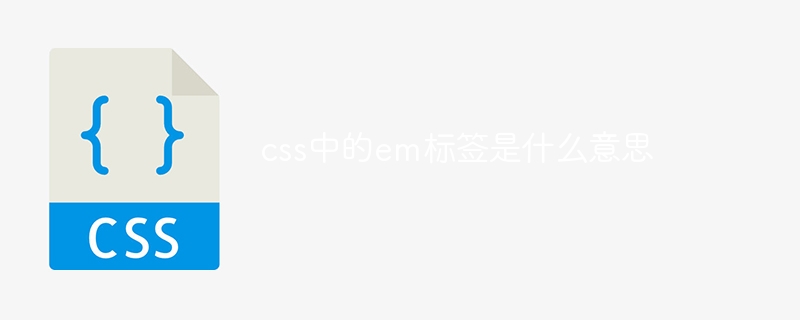
EM in CSS represents a length unit relative to the current font size, denoted as "em" (for example, font-size: 1.2em;). It differs from PX (Pixels) and REM (Root EM) in that it is relative, relative to the current font size, whereas PX is absolute, representing screen pixels, and REM is relative to the font size of the document's root element. EM is used to adjust text size and spacing to resize text based on user preferences, create responsive designs, and define space between elements.

The meaning of EM tag in CSS
EM is a unit in CSS, indicating a relative to the current The length of the font size.
How to use EM
The EM value is followed by the letter "m", for example:
font-size: 1.2em;This sets the font size of the text to the current font size 1.2 times.
The difference between EM and PX and REM
When to use EM
EM is suitable for resizing and spacing text without changing its proportions. It's especially useful for:
Example
body {
font-size: 16px;
}
h1 {
font-size: 2em; /* 相对于正文文本的 2 倍 */
}
p {
margin-bottom: 1em; /* 相对于正文文本的 1 倍 */
}The above code will:
The above is the detailed content of What does the em tag in css mean?. For more information, please follow other related articles on the PHP Chinese website!